What are the latest VR headsets from Facebook and Google?

The smartphone market is now winding down even in China ( for the first time in 9 years ). People do not understand why taking models even thinner or more powerful. Great useful innovations, it seems, have ceased to wait even from Apple. But, fortunately, companies have found a new gadget on which they are pinning their hopes. The other day, Xiaomi and Facebook released the Oculus Go mobile VR headset. Less than a week, Lenovo and Google have released their own VR headset of a similar type. And this is only the beginning: all the major players in the smartphone market are rolling out their versions one by one, hoping to find their niche on the unplowed soil of VR and AR. But is it worth now to take such devices for yourself, and will the rate of companies play? With us, every month thousands of Russians buy these gadgets in the US , in America new VRs are much cheaper. And so we decided to see what the latest generation of VR headsets are, and what are its prospects.
Oculus go
Xiaomi is preparing for an IPO in Hong Kong, and she really wants to get at least $ 10 billion from the placement of shares. But the smartphone market is already overheated even in the Middle Kingdom, and the plans for developing India and Africa are not going very smoothly so far. So that it was possible to spend R & D resources for something, and investors did not panic, the main Chinese smartphone maker stated in 2016 that from now on it will actively develop VR. Simple Mi VR and Mi VR 2 glasses, similar to Google's Daydream View, did not get much success, but they cost only $ 14, and introduced the Chinese audience to the virtues of virtual reality. And now the company has merged with Facebook and releases a much more solid headset.
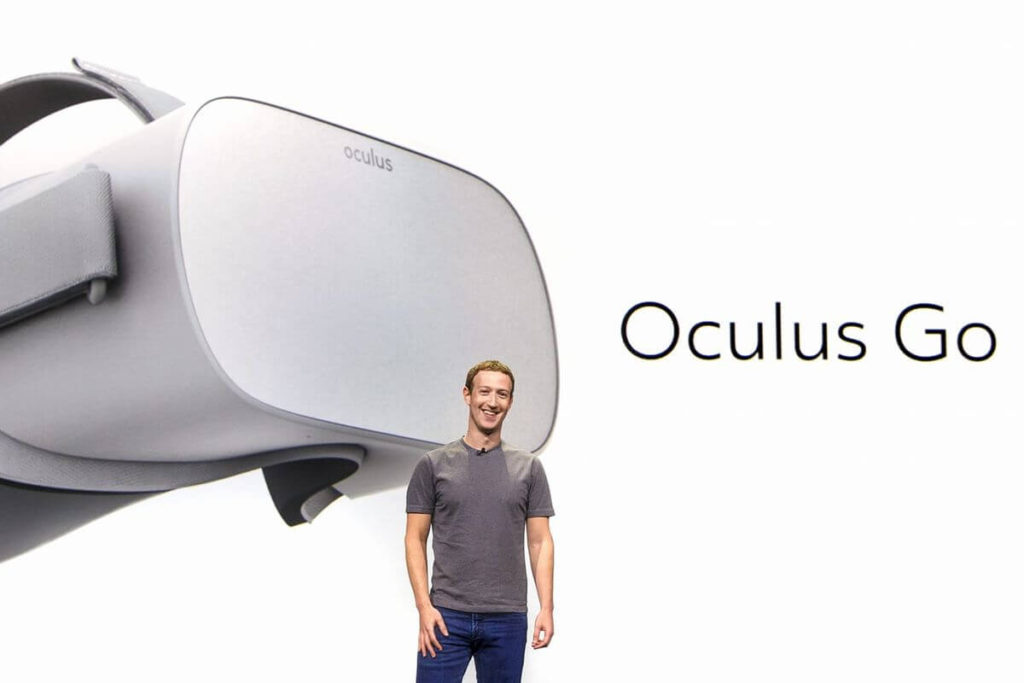
On May 1, the first fully mobile VR headset came out in the US and eleven other countries. Without the need to connect to the console, computer, smartphone, or anything at all. You can wear this, and go to walk around the city, presenting yourself as a superman. Before that, such a mobile concept was tested in Oculus Santa Cruz (which is currently available only to developers). But unlike it, the Oculus Go headset does not require futuristic tracking technology and therefore can work without external cameras. The downside is that with Go there is no point walking around the room or stooping. Headset does not track such movements.
In fact, the functions of the new device are the same as those of the Gear VR developed by Oculus together with Samsung, but without the need to insert a Samsung smartphone into a special slot where the applications with virtual reality are downloaded. The smartphone is "built in" here, and, surprisingly, it almost did not affect the cost. Inside the headset is a 5.5-inch display with a resolution of 2560x1440 (1280x1440 per eye). With a Snapdragon 821 processor from 2016 and 32 GB of storage (there is a 64 GB version, but for some reason it is prohibitively expensive, considering that this is the only difference).
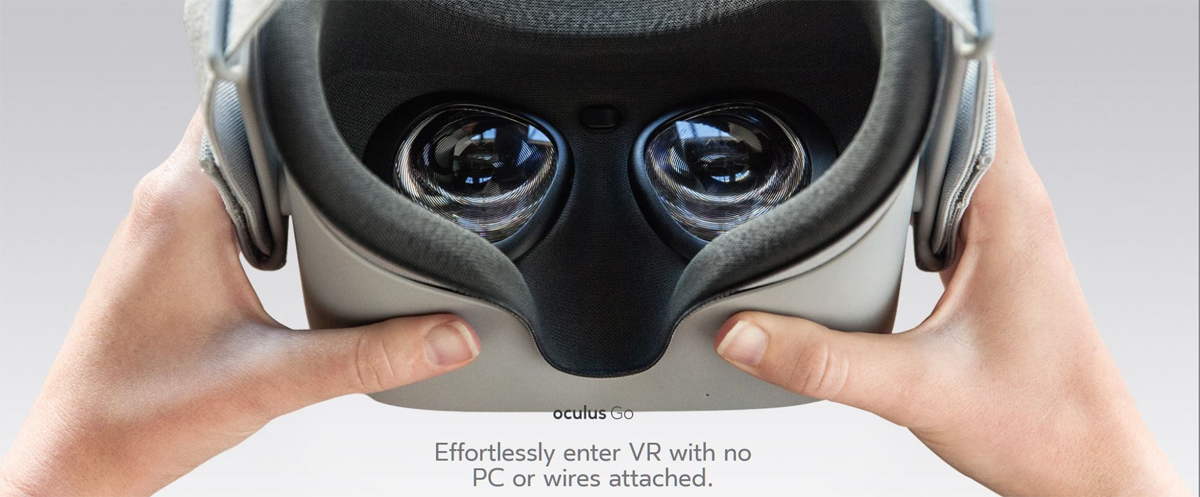
Oculus Go has weaker characteristics than modern smartphones, but everything is sharpened specifically for VR, and Oculus promises that virtual reality applications on the device will work better than even on iPhone X. And for a better display of all this beauty, simple magnifying lenses from Gear VR was replaced with Fresnel lenses , as in the Oculus Rift.
Despite the mass of iron, the Oculus Go weighs 468 grams, almost as much as the HTC Vive and Oculus Rift. And less than Gear VR, given the lack of weight of the smartphone. Headset still remains heavy, and it’s uncomfortable to stay in it for a long time, but this is a movement in the right direction, to the technologies of the world “To the first player to get ready”.
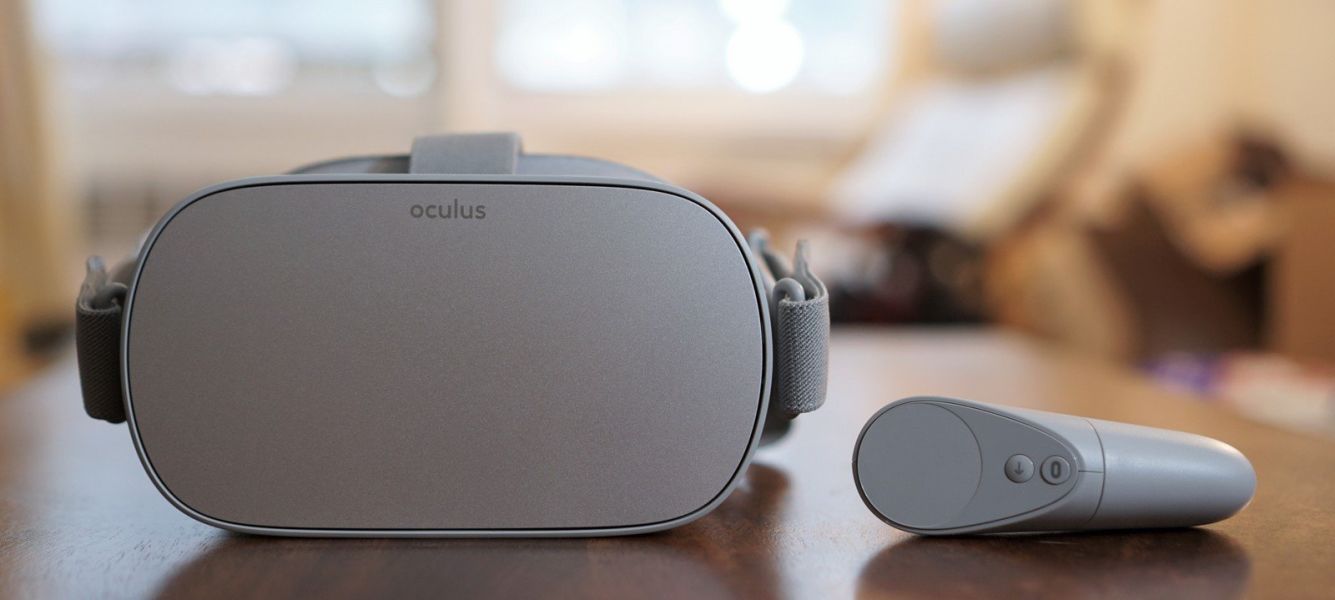
The device connects to Wi-Fi, and you can download games or make settings directly from it, without connecting to a smartphone / tablet. It has a browser, there are options for both left-handers and right-handers. It is a little unusual that it is impossible to check from the menu how much free space the device has. The device only reports when you have 2 GB or 500 MB left. From one charge the gadget lives 3 hours.
The apps are the same as Gear VR, but for people without a Samsung smartphone. For those who have an iPhone or other device on Android, the purchase of Oculus Go will be much cheaper. Plus - improved glass, a more comfortable stretchable elastic for mounting the headset on the head, and built-in imperceptible speakers that deliver sound directly to the user's ears. Even headphones to the Oculus Go in the US do not have to buy . But there is also a mini-jack for them here, along with Micro-USB (strangely, not USB-C) for charging.
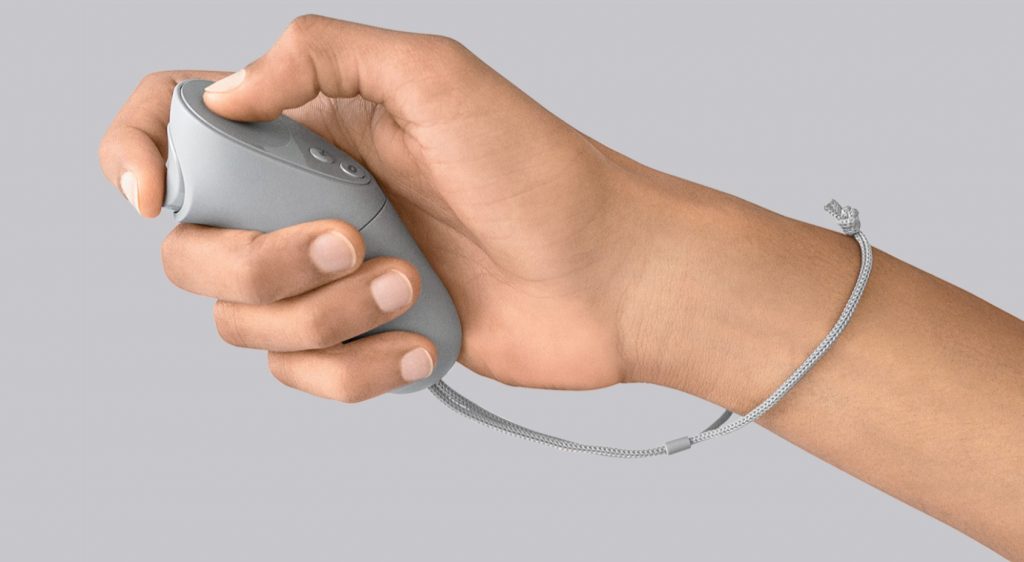
The main disadvantage of the device is not even its own problem. But there are still few decent applications and games on VR, especially on small and not very powerful headsets. There are not so many of them in circulation yet, they are not so popular that developers actively switch and start creating cool things for Oculus. Three years have passed since the company sells its VR headsets, and out of a thousand “impressions” that can be downloaded for them, attention costs no more than a dozen (although, of course, it’s still more than the competitive platform, Google Daydream). Most applications are either completely uninteresting, or buggy, or terribly inconvenient in use.
The most popular - the most simple. With primitive mechanics, which consists in performing the same type of action many times in a row. The level of "Snake" or "Tetris", only for a new era. But if you can play such games on a smartphone (for a couple of minutes while you have nothing to do), then the main charm of VR is in immersion, and in a short simple game you simply cannot reach it. In this regard, more solid headsets that use the power of consoles and computers, yet still lead.

But taking the Oculus Go is probably not even worth the game. The company actively advertises viewing through the headset of concerts, stand-up shows and sports. competition. "For full immersion in the atmosphere." Just the other day, the Oculus TV service will start, and in the headset you can watch movies and TV shows from Netflix, Hulu and other popular portals. There is also a "party space" for gathering, socializing and watching movies with friends or strangers. Many expect that the future of VR is precisely behind this: comfortable, unobtrusive communication in virtual space. Like VRChat, available now on powerful headsets, only without memes and Ugandan Priklzov. But for advanced exciting games with interesting gameplay, portable VR glasses like Oculus Go are still poorly suited. A person is not given enough control, there is no necessary accuracy of tracking movements, and often have to fight not with monsters, but with a control system.
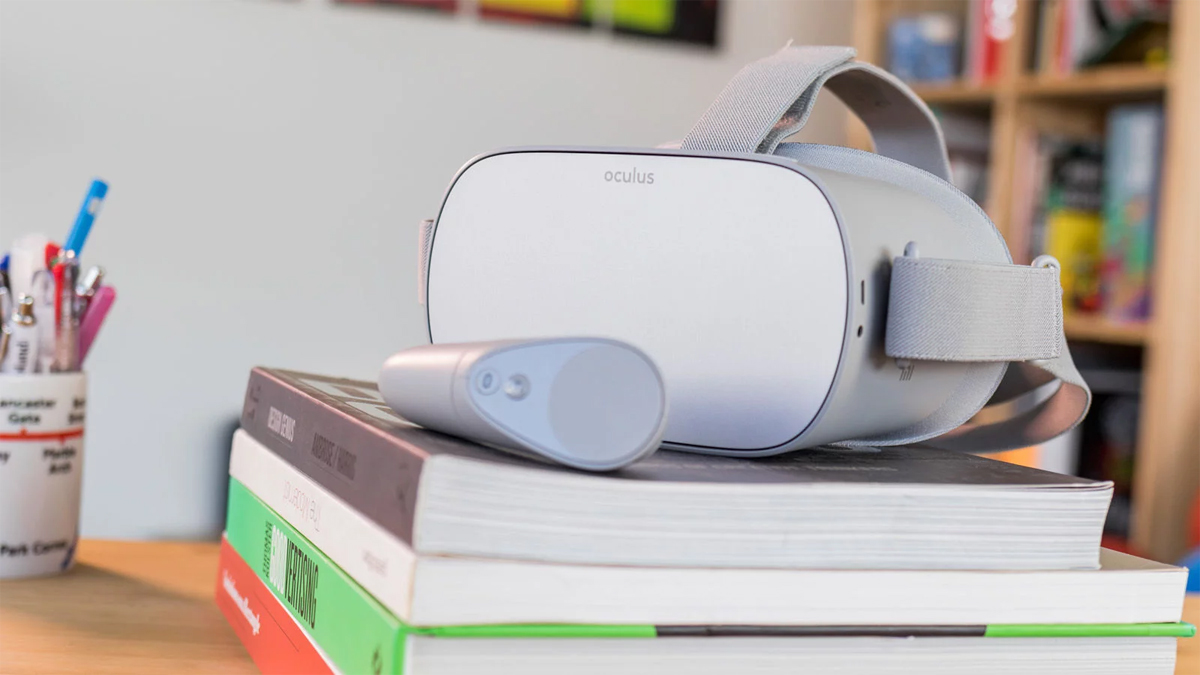
Pros:
- comparative cheapness;
- ability to work without third-party devices;
- well suited for watching 3D movies (if there is enough space inside);
- like Gear VR, but cheaper and more convenient for users without a Samsung smartphone.
Minuses:
- low number of decent applications on the platform (even Anshar Online is not very impressive);
- long charging time;
- not such a full tracking of movements, like the Oculus Rift or Oculus Santa Cruz (even to tilt your head will not work).
You can get Oculus Go for $ 199 from Amazon , NeweGG and BestBuy .
Lenovo Mirage Solo
Literally right behind Oculus Go, its direct competitor was released by Lenovo and Google. Mirage Solo was released on May 4th. It is also a stand-box, without the need to connect to a smartphone, computer or gaming console. Everything you need is inside the headset. Google makes a big bet on it. First, the device should help the development of its Daydream VR platform. Secondly, it should test WorldSense tracking technology, which allows you to scan a person's movement in virtual reality through cameras embedded in their headset. Lenovo Mirage Solo is the first device that combines both of these systems (after HTC last year canceled its plans to release the device with Daydream).
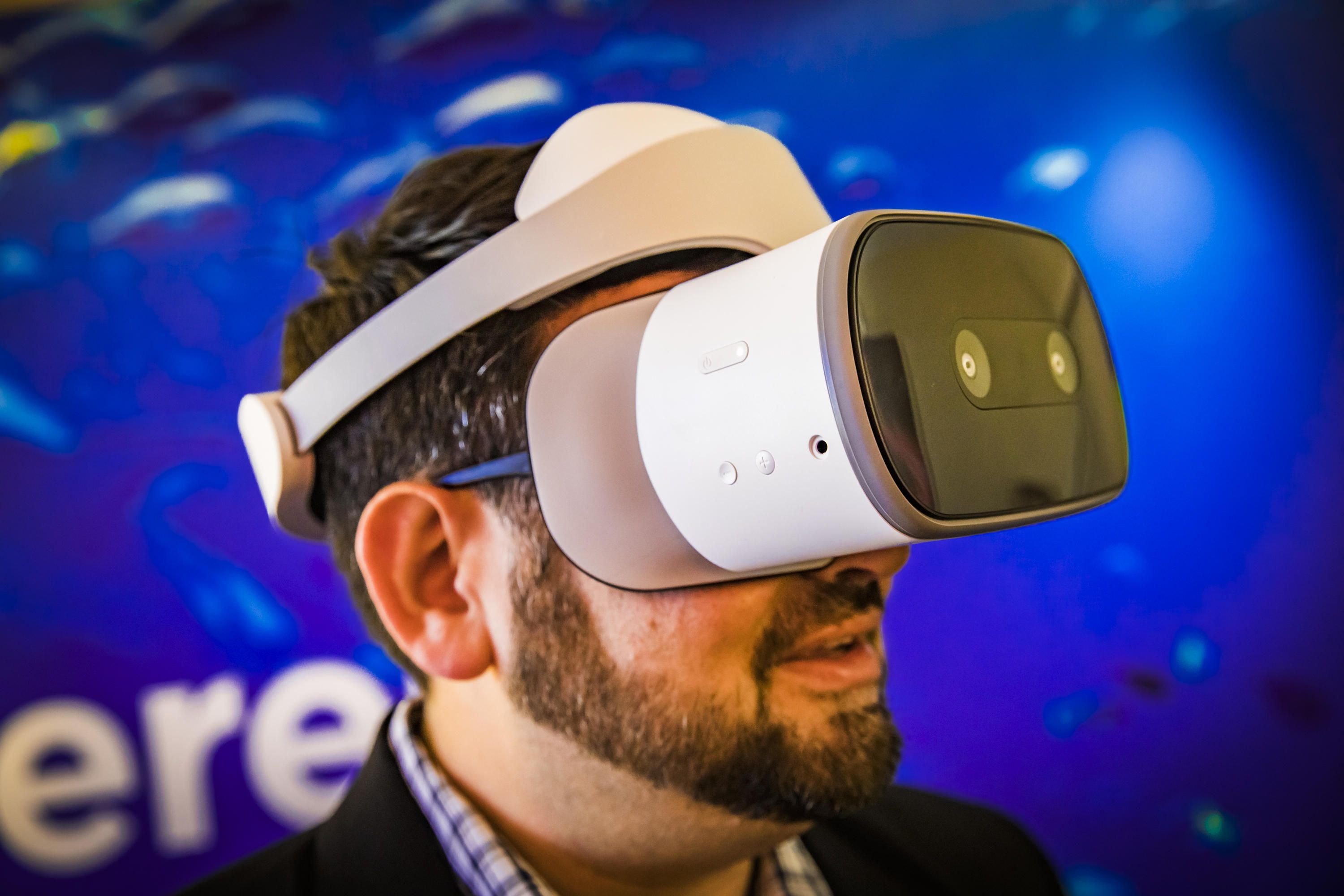
The device is very similar to the previous Google headset - Daydream View, - but does not require the insertion of a smartphone. Inside it has a 5.5-inch screen with a resolution of 2560x1440, similar to that of the Oculus Go. The stuffing is a bit more powerful: Snapdragon 835, 64 GB of storage by default (plus it can be expanded with MicroSD). From one charge - about the same three hours of continuous work. The equipment includes two microphones, a mini-jack for headphones and a remote control - the same as the Daydream View.
Its competitor device surpasses thanks to WorldSense. The camera-eyes are integrated into the headset. They track when you tilt your head or crouch, and make VR impressions more fulfilling. True, it is possible to do all the movements of the head only within one square meter. Google says that in the future this restriction with WorldSense will be removed, but for now, if you go beyond this meter, everything with glasses stops and you have to go back or reconfigure the headset.
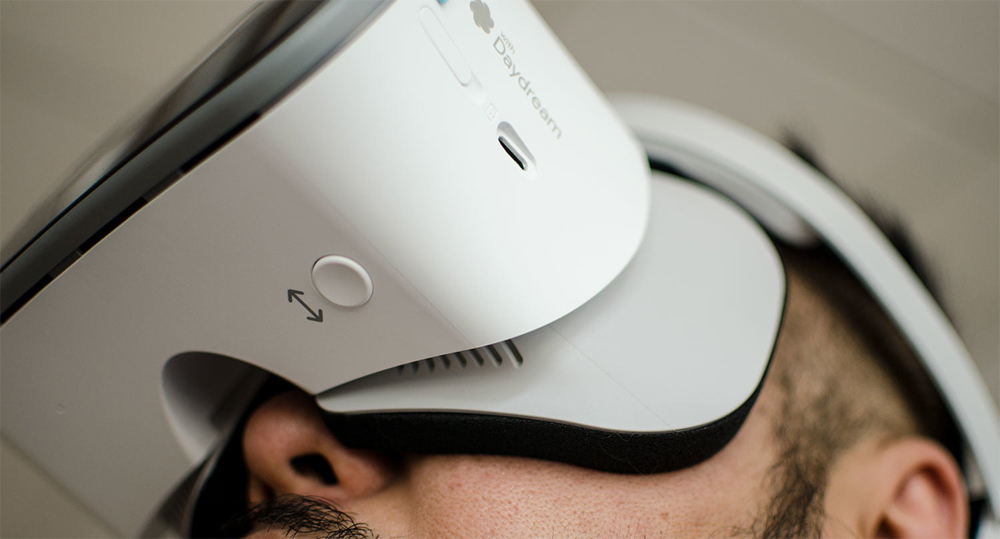
Another limitation of technology is that it cannot be used in a dark room. And it's better not to cover the cameras in front. There is still speculation that Mirage Solo will not be able to track head movements in a completely empty space, without furniture and angles that can be used in the room. For a private user, this is not very important, but with a person performing on a large empty stage in front of an audience, confusion may occur.
Big Daydream is a VR video. Including a virtual reality app from YouTube, presented a year and a half ago. Nature, extreme, concerts, interiors, events, music videos - filmed with a 360 ° camera. It's funny for a change, and there is very high quality content, but there is no support for WorldSense (you can only turn your head left and right), so the usual Daydream View with watching this video will do the same. And it costs less.

One of the main problems of a headset is so far, again, an ecosystem. Here she is even more modest. About 350 applications work on Daydream, mostly mini-games. There are pretty funny ones. But for five to ten minutes. Rolled on the peaks of the mountain, twisted from the snowballs flying at you - and that's enough. Complicated full-fledged horror, as on the Oculus Rift, there is not yet to experience. The control panel is also quite primitive, you have to get used to a decent time to create at least the slightest illusion that you really use your body. More sophisticated consoles for HTC Vive, Oculus Rift and PlayStation VR make the immersion effect much deeper, with which a person has freedom of action.
Obviously, Mirage Solo is a more advanced and powerful stand-alone device than all its predecessors. But pushes the price. It is almost twice as expensive as the Oculus Go, and WorldSense alone does not justify this difference. It's easier to buy Daydream View for $ 99, and buy a smartphone for it for $ 300. Cost the same amount, and in the end get two devices. Even the speakers built into the headset are not here, although they already seem to have become the standard for VR headsets. Also, due to WorldSense, the device came out pretty heavy: 645 grams. 177 grams more than Oculus Go.
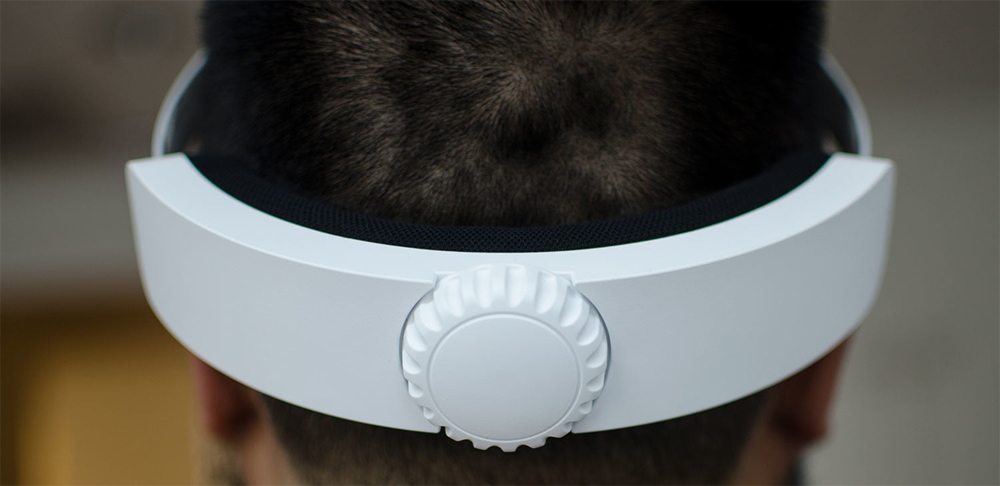
Such shortcomings are simply explained. Mirage Solo is a testing technology. And it is intended primarily for developers. So they can see the potential and start making their applications under WorldSense and Daydream. Even Clay Bavor, head of virtual and augmented reality at Google, says this:
We saw real interest from those who are passionate about VR. Developers, creators, first users. They see what this potential is. You are not attached to external devices, and at the same time the position of your head is perfectly tracked. Our technology must be believed by more people.
The first reviewers call the headset “the next breakthrough in VR, ” but in and of itself it is unlikely to entice users. This is a sample, and by how well it goes down, Google will decide whether to continue to develop the technology. If the experiment is successful, and the developers, imbued with the idea, will begin to create applications to WorldSense, it will be hard for them to switch back to Oculus. And Google will release a better controller, put pressure on advertising, lower the price to secure success, and still win over a good share of users. At least hope for it. In the meantime, there are a total of 350 applications, of which a few dozen God sharpened are under WorldSense.

Pros:
- innovative technology WorldSense: headset itself tracks your position (six degrees of freedom for the head);
- interesting in appearance (where else did you see a headset with two eyes in front? You didn’t think of it even in science fiction);
- high-quality assembly of Lenovo.
Minuses:
- a weak controller (only three degrees of freedom at the console, and he is only one);
- heavy, you will not sit in such a long time;
- works within one square meter;
- So far, there is a very weak set of WorldSense compatible Daydream applications.
Sells for $ 399 from Amazon and Lenovo . Sales on Amazon, by the way, open, stop, and sometimes the page disappears altogether. It’s not clear what this is all about, but it looks funny, given the long history of dislike between Amazon and Google.
Meanwhile at apple
Industry experts predict that the AR / VR market will reach $ 108 billion by 2021. Mainly due to the business that wants to make buyers more loyal, opening for them a new version of acquaintance and "communication" with their products. Of course, Apple also wanted to take a bite out of such a large cake (by the way, we remind you that buying an iPhone in the US from Russia is much more profitable, and with this you will save at least 10-15 thousand rubles). So, a couple of weeks ago, CNET unearthed information that the Yablochnik secret is also doing a headset. And also mobile, without wires and the need to purchase additional devices. Their gadget should be ready by 2020. By modern standards, it will be prohibitively advanced (and, like Apple used to be, dear). The project code name is T288.
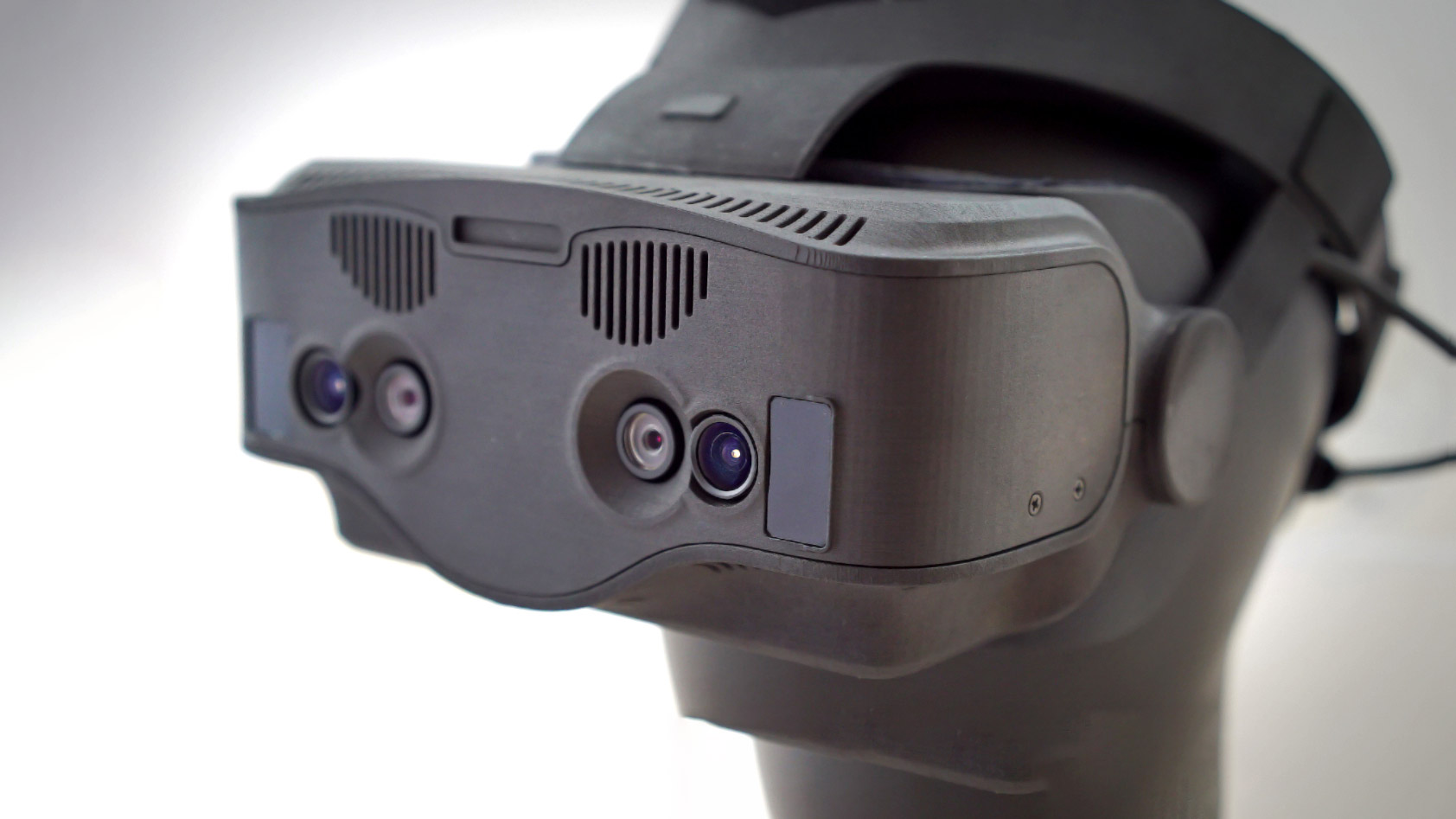
Developing a VR startup Vrvana, which Apple bought last year for $ 30 million
The headset will come with two 8K displays (one for each eye). This is considering that now even 4K for the eye is considered very cool. There will be cameras in it, as in Mirage Solo, assessing the surrounding situation. They will be able to determine when the user is tilting or walking around the room, and perhaps even warn him about the danger if he is so intoxicated with the game that he is now faced with something. For work, the headset will connect to a special box using 60GHz wireless technology WiGig. To power it, according to rumors, there will be a 5-nm processor. The A11 chip in the iPhone X from Apple was created using 10nm technology, that is, the company is going to use hardware for the headset, which is not yet on the market.
PS Gadgets are new, not yet sold in Russia. But, considering the previous experience with HTC Vive and PS VR , in the Russian Federation they will cost at least 20-30% more expensive. As usual, all devices are much more profitable to buy in the USA . Mandatory notification for them has recently been removed, and the latest gadgets can now be safely brought into the country without fear of customs (within € 1,000 per month). And for the delivery of American stores, we are responsible, Pochtoy.com. From $ 11.90 per pound. And 7% discount to all readers who after registration will indicate the code HABR.
All Articles